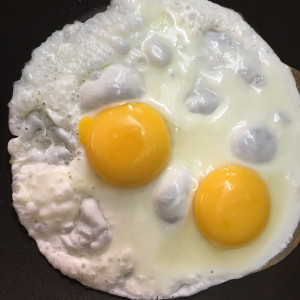
This paper estimates that the EAT-Lancet planetary health diet, which is low in animal products, does not provide sufficient levels of vitamin B12, calcium, iron and zinc. The calculations assume no supplementation or fortification. The authors recommend modifying the EAT-Lancet diet by increasing the levels of animal sourced foods and reducing foods high in phytate.
The original EAT-Lancet paper found that the EAT-Lancet diet would provide more of most micronutrients compared to current global eating patterns, including increased levels of “iron, zinc, folate, and vitamin A, as well as calcium intake in low-income countries”, except for Vitamin B12, which the authors suggested might need to be supplemented or provided via fortification in some circumstances.
The new paper studied six micronutrients that are globally scarce: folate, vitamin A, vitamin B12, calcium, iron and zinc. The calculation methods differ in several ways from those of the EAT-Lancet paper:
- The new paper uses an updated source of information on adequate nutrient intakes.
- A global food composition database is used, instead of only the USDA’s FoodData Central database which was used in the original paper, and which is not globally representative.
- Each food group is treated as having multiple specific foods in their commonly consumed forms (raw or cooked), whereas the EAT-Lancet paper included few food types in each category and only used the nutrient values for raw foods.
- Three new food groups (seeds, organs and refined grains) and six foods (beef and five types of fish or shellfish) are added to the analysis.
- The bioavailability of iron and zinc is accounted for, which was not done by the EAT-Lancet paper. Iron and zinc can be less available to the body in diets containing low amounts of animal-sourced foods or high amounts of phytate. The new paper estimates that iron is only 10% bioavailable and zinc 26% bioavailable in the EAT-Lancet diet.
- The new paper uses global average energy requirements for moderately active individuals - and hence lower calorie intake - which the authors say are more in line with actual activity levels than the EAT-Lancet’s assumption of moderate to high activity.
The image below shows that the EAT-Lancet diet, according to the new calculations, does not provide adequate levels of vitamin B12, calcium, iron or zinc. Separate results are given for women of reproductive age because of their differing nutritional requirements - particularly, they have on average higher iron requirements, because of iron loss during menstruation. The shortfall in iron is particularly noticeable for women of reproductive age, with the EAT-Lancet diet providing only 55% of iron requirements.
Image: Beal et al. (2023). Percentage of recommended nutrient intakes for six micronutrients in the EAT–Lancet healthy reference diet.
The authors argue that it is best to fill these micronutrient gaps through increased consumption of “minimally processed, intrinsically nutrient-dense foods”, as opposed to through fortification or supplementations, on the grounds that whole foods contain many components in a “food matrix”, with positive effects on metabolism and health. They caution against consumption of ultra-processed foods, arguing that they are energy-dense, hyper-palatable and disrupt gut-brain signalling.
Hence, they propose adjustments to the EAT-Lancet diet that could provide adequate levels of these micronutrients. At the population level and compared to the original EAT-Lancet diet, the adjusted diet would obtain 27% of calories from animal sources (compared to 14%) and reduce dietary phytate by around half to improve iron and zinc absorption. Compared to current global intakes, this new diet includes less red meat and more eggs, fish, shellfish, and dairy products - however, the paper does not quantify current global average intakes.
The authors note that the new diet is not optimised for reduction of non-communicable diseases or environmental impact. They conclude by saying that providing nutritionally adequate diets within the planetary boundaries is likely to be highly challenging, requiring coordinated effort from across society.
Note that one of the authors of this paper, Jessica Fanzo, was also a co-author of the original EAT-Lancet paper.
Abstract
Unhealthy diets are a major contributor to the global burden of disease, and food systems cause substantial environmental destruction. To lay out how to achieve healthy diets for all, within planetary boundaries, the landmark EAT–Lancet Commission proposed the planetary health diet, which includes a range of possible intakes by food group and substantially restricts the intake of highly processed foods and animal source foods globally. However, concerns have been raised about the extent to which the diet provides adequate essential micronutrients, particularly those generally found in higher quantities and in more bioavailable forms in animal source foods. To address these concerns, we matched each food group point estimate within the respective range with globally representative food composition data. We then compared the resulting dietary nutrient intakes with globally harmonised recommended nutrient intakes for adults and women of reproductive age for six micronutrients that are globally scarce. To fill the dietary gaps that were estimated for vitamin B12, calcium, iron, and zinc, we suggest modifications to the original planetary health diet to achieve micronutrient adequacy (without fortification or supplementation) for adults, which included increasing the proportion of animal source foods and reducing foods high in phytate.
Reference
Beal, T., Ortenzi, F. and Fanzo, J. (2023). Estimated micronutrient shortfalls of the EAT–Lancet planetary health diet. The Lancet Planetary Health, 7(3), E233-E237.
Read the full paper here. See also EAT-Lancet: healthy diets from sustainable food systems, Reactions to the EAT-Lancet Commission and Impacts of the EAT-Lancet diet on European farming, as well as the TABLE Letterbox series Vegan or flexitarian - which diet is healthier?, featuring Flaminia Ortenzi, one of the authors of this paper.







Chartered Environmentalist